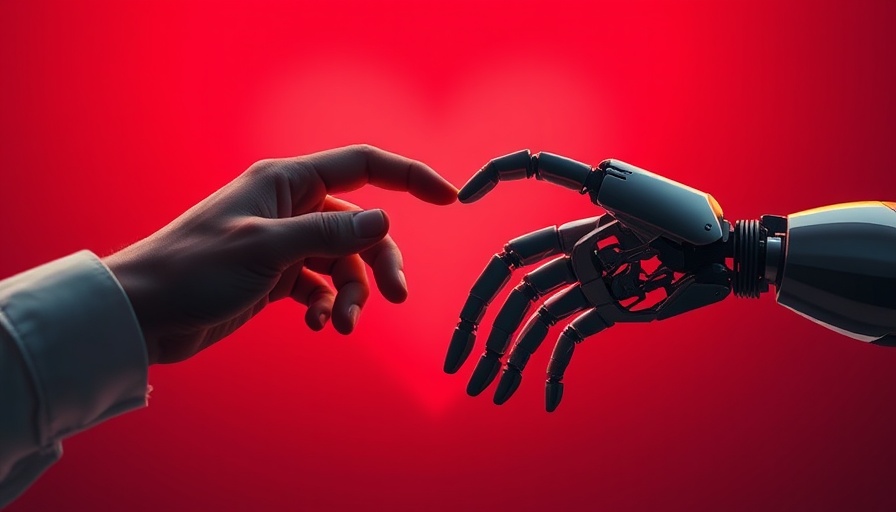
Rethinking Robot Interaction: The Future of Emotional Intelligence
At only 19 years old, Teddy Warner is revolutionizing how robots and humans interact by aiming to give robots emotional intelligence. As the founder of Intempus, Warner’s mission is centered on bridging the significant gap between mechanical reactions and human emotional responses. This groundbreaking venture echoes a broader trend in technology that emphasizes the importance of emotion in artificial intelligence (AI).
Understanding the 'B Step': A Vital Component of Interaction
Warner identifies a key aspect of human interaction that robots lack: the physiological response that occurs between observation and action, which he dubs the “B step.” Unlike today's robots that typically jump from A (observation) to C (action), humans naturally experience a nuanced intermediary phase where emotions can change and inform our reactions. For instance, think of a person who notices a spilled drink and evaluates the situation based on instinctive emotional cues of urgency or caution.
Transforming Robots with Physiological Simulations
To remedy this, Warner's approach strives to equip robots with systems capable of simulating these physiological states. Imagine a Roomba that signals distress when its movement is hindered—using slight changes in posture or movement to plea for help. Darkening this concept even further, this physiological cue system could be applied to various robots, from household helpers to industrial machines, enhancing their capability to communicate and interact more naturally with humans and each other.
Real-World Applications and Innovations
The implications of this technology are far-reaching. By retrofitting existing robots with the ability to convey expressions, they could become more relatable and effective in environments such as veterinary clinics. For instance, a veterinary assistant robot could adjust its movements to convey empathy during examinations, alleviating animal stress and creating a more comforting atmosphere for pet owners. This shift in how robots express emotional states could not only enhance operational efficiency but also foster deeper connections between technology and users.
Data-Driven Insights: Real Emotions to Refine AI
Warner’s initial research involved capturing physiological data from humans such as sweat, heart rate, and body temperature. This foundational work is essential because it helps create a database that relates physiological changes to human emotional responses. The more data captured, the better machines can learn to adaptively respond to human emotions and potentially create customized interactions. This data-driven approach is akin to what veterinary clinics could leverage: understanding pet behavior through physiological indicators can enhance care tailored to individual animals.
Challenges and Considerations in Robot Development
While the potential benefits are enticing, challenges exist within the field of emotion-capable robotics. Notably, current technology limitations and ethical concerns surrounding emotional AI could hinder advancements. Furthermore, as vet clinics consider integrating such technologies, the investment in training and developing existing staff will be crucial. Practitioners must understand the depth of human-robot interaction, ensuring every innovation adheres to the highest ethical standards.
The Future of Veterinary Practices with AI
As the entire veterinary industry evolves due to rapid technological advancements, embracing AI with emotional intelligence could revolutionize patient and client interactions. This new era may usher in personalized experiences for both pets and their owners. Robotic assistants that respond intuitively to emotions can foster trust and lead to higher satisfaction rates, ultimately benefiting the clinic's reputation and profitability.
Conclusion: Embrace the Change for Future Growth
As we stand on the cusp of a new age of technology, veterinary practitioners must remain open to exploring innovations like those championed by Teddy Warner. The incorporation of emotionally intelligent robots can enhance the standard of care and operational efficiency, allowing clinics to navigate the current landscape while meeting the demands of tomorrow. As this field progresses, staying informed and engaged with ongoing developments will be vital for those aiming to harness emotional intelligence in veterinary practices.
 Add Row
Add Row  Add
Add 

 Add Row
Add Row  Add Element
Add Element 




Write A Comment